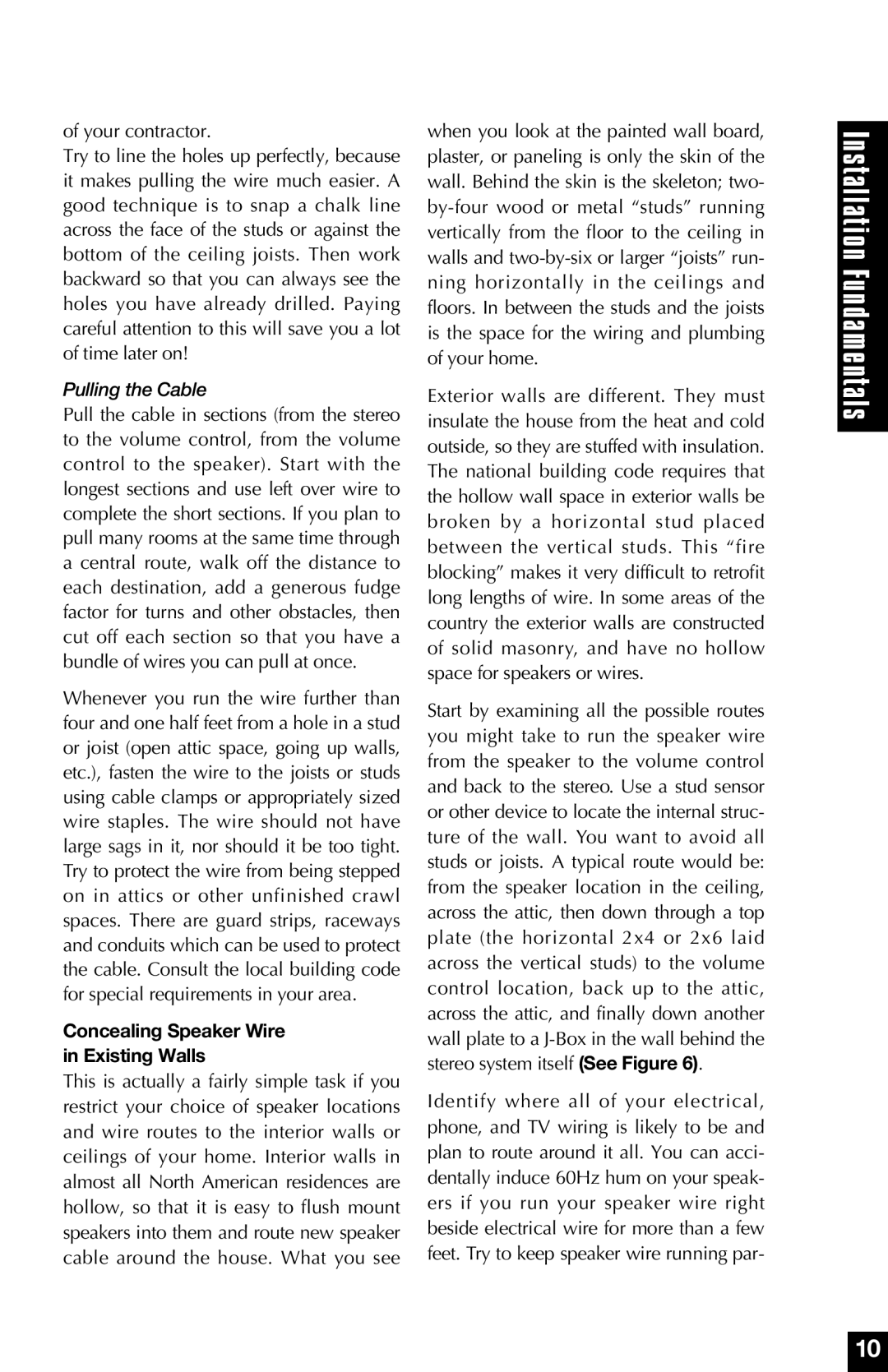CM6HD, CM8HD, CM5HD specifications
Niles Audio has long been synonymous with high-quality sound solutions, and their line of in-ceiling speakers, the CM5HD, CM8HD, and CM6HD, showcases this commitment to excellence. Designed for residential and commercial applications, these speakers combine aesthetics with performance, making them ideal for any setting.The CM5HD is the entry-level model, yet it doesn't compromise on sound quality. With its 5.25-inch polypropylene woofer and 1-inch silk dome tweeter, it delivers clear, balanced audio across various frequency ranges. The CM5HD is equipped with a patented Tri-Logic™ technology, allowing for seamless integration into a home’s audio system. This technology helps in achieving a wider soundstage and better imaging, making it perfect for both music and movie experiences.
Moving up to the CM6HD, the larger 6.5-inch woofer enhances bass response, providing a richer audio experience. Its 1-inch pivoting soft dome tweeter allows for customizable sound direction, ensuring that listeners get the most immersive audio experience possible. The CM6HD also features a unique magnetic grille that allows for easy installation and discreet appearance, ensuring that the aesthetic of any room remains intact while still enjoying exceptional sound quality.
The CM8HD is the flagship model of the series, designed for audiophiles seeking the ultimate performance. With an 8-inch woofer and dual 1-inch tweeters, this speaker is built to fill larger spaces with powerful, full-bodied sound. The CM8HD includes Niles Audio’s advanced dual voice coil technology, offering flexibility in audio performance. Its optimized tweeter placement means that users can enjoy sound that is evenly distributed throughout the room, making it perfect for larger home theaters or entertainment spaces.
All models in the CM series feature a weather-resistant design, making them suitable for indoor and outdoor installations. Niles also offers customizable paintable grilles that allow these speakers to blend seamlessly into any décor. Additionally, each model incorporates advanced high-definition sound reproduction capabilities, ensuring that high-resolution audio files are played back as intended.
In conclusion, the Niles Audio CM5HD, CM6HD, and CM8HD in-ceiling speakers combine cutting-edge technology with elegant designs. With features that enhance sound quality, user flexibility, and aesthetic appeal, these speakers are perfect for anyone looking to elevate their audio experience in any environment, proving that great sound can be enjoyed without sacrificing style.
